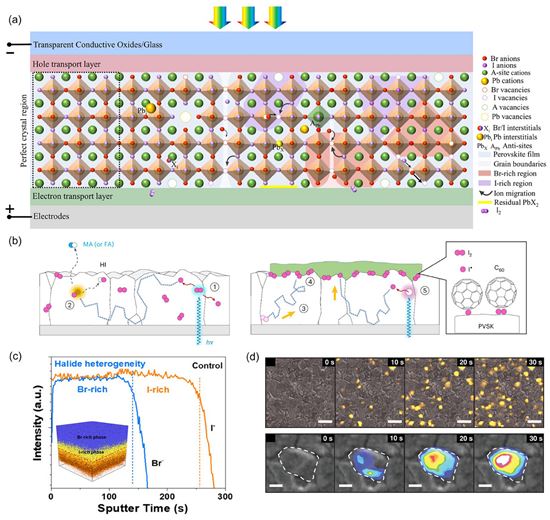Recent Advances in Wide-Bandgap Perovskite Solar Cells
Mei, Jianjun ; Yan, Feng
Advanced Materials (Weinheim) • Published on 1 April 2025
Wide-bandgap (WBG) perovskite solar cells (PSCs) have garnered considerable attention of late for their potential as semitransparent photovoltaics for building integration, top-cells in tandem configurations, and indoor photovoltaics (IPVs) for Internet of Things (IoT) applications. However, recent investigations have unveiled that underlying defect-mediated phase segregation, ion migration, lattice strain, and other factors can give rise to self-accelerated degradation reactions and the contraction of quasi-Fermi level splitting (QFLS) within devices. Extensive efforts have been undertaken to reduce defect densities in bulks, at surfaces, and across interfaces with charge transport layers (CTLs). This review provides a timely and comprehensive understanding of the intrinsic defect ecosystem in WBG perovskites, and mechanistically elucidates their impacts on device stability and open circuit voltage losses. Subsequently, recent advances in defect passivation strategies are cross-sectionally overviewed, covering various components of devices. The applications of WBG PSCs in semitransparent devices, tandem applications, and IPVs are discussed. Finally, prospects and challenges are proposed, providing insights for future research and technological advancements.



